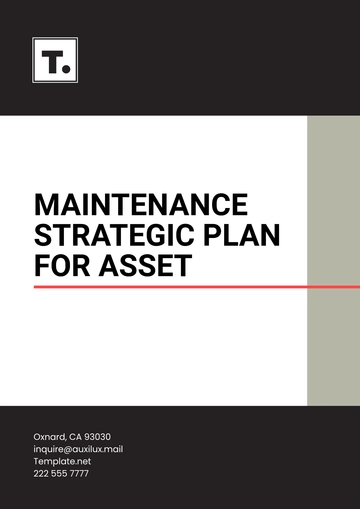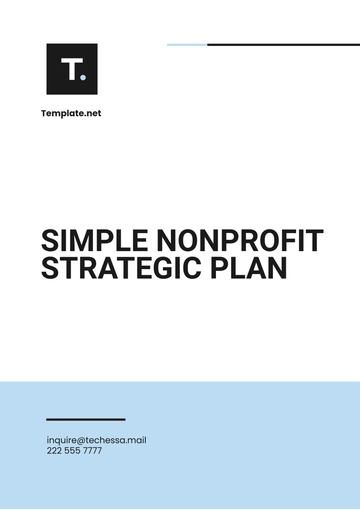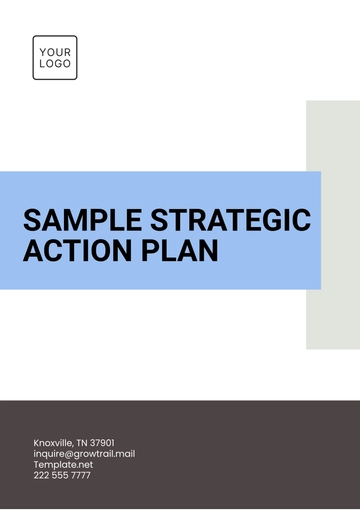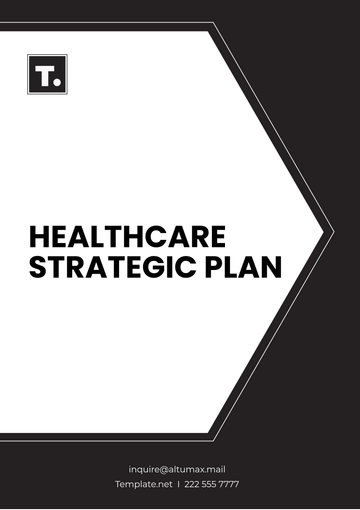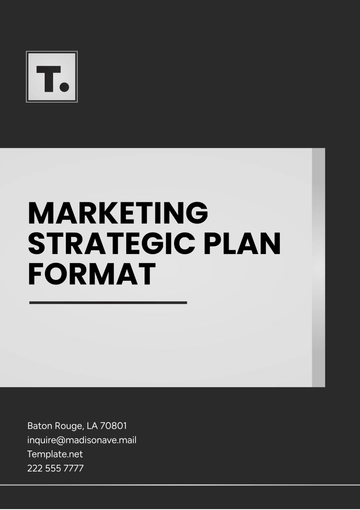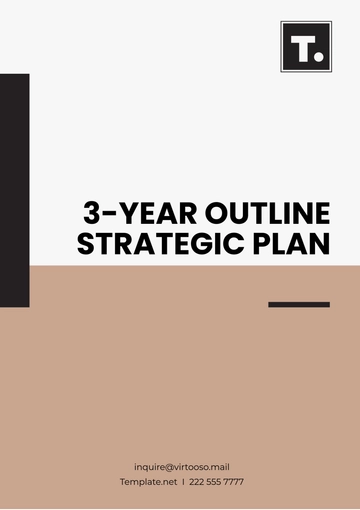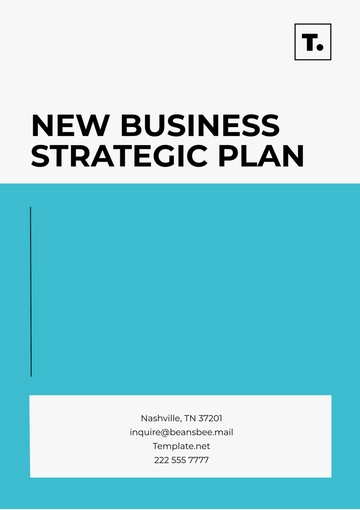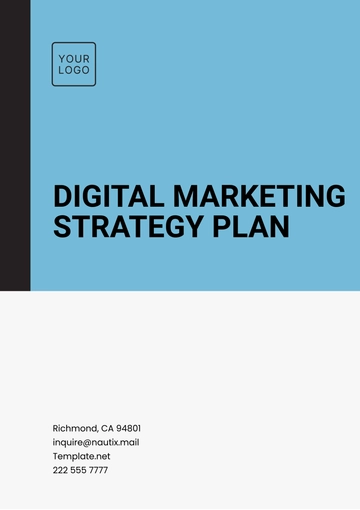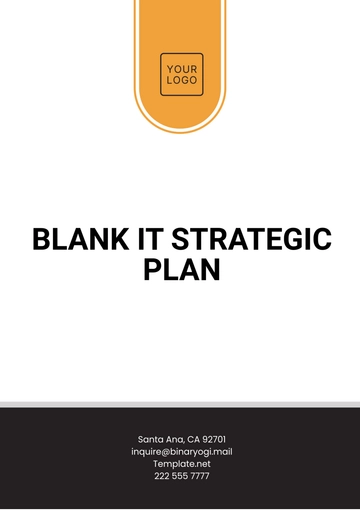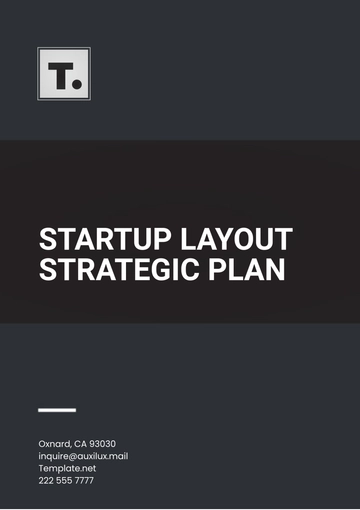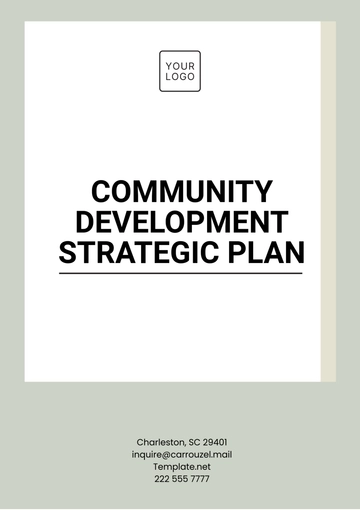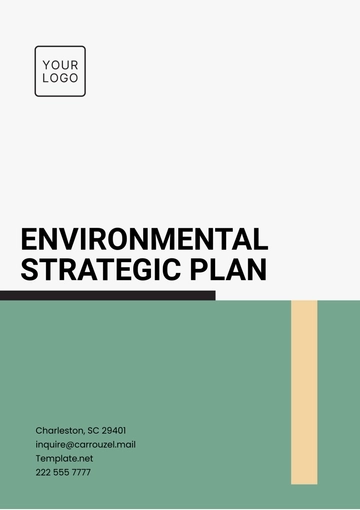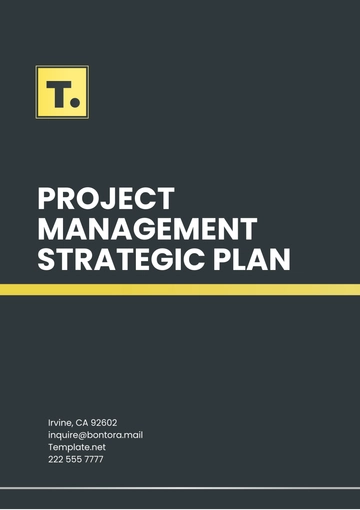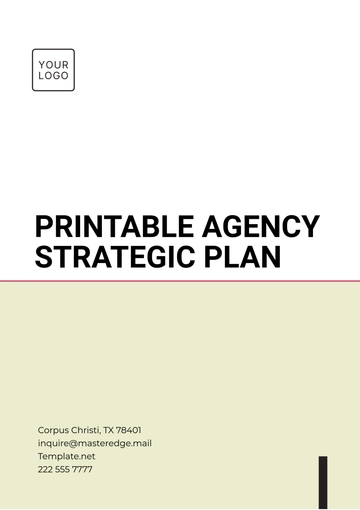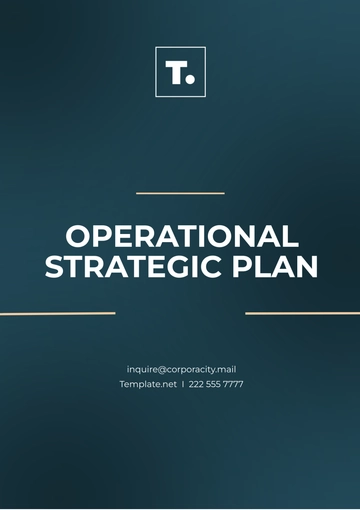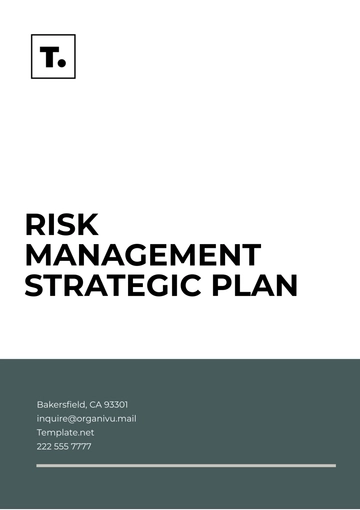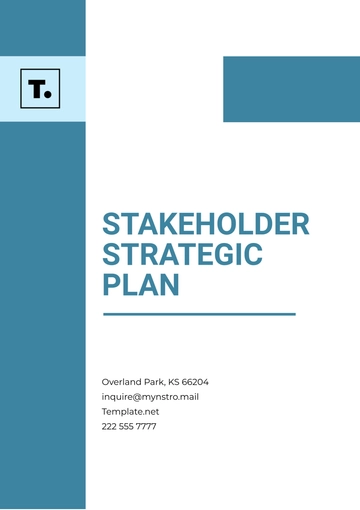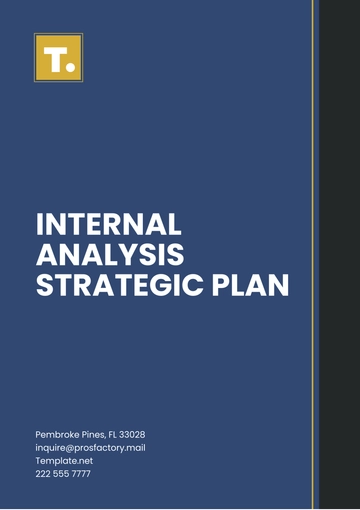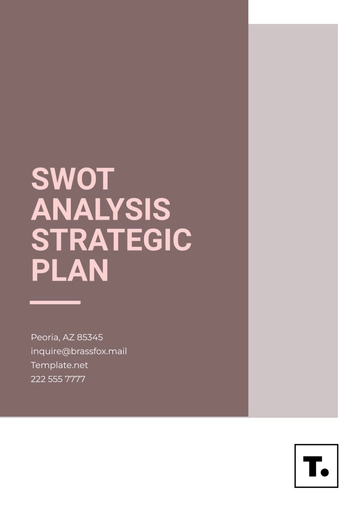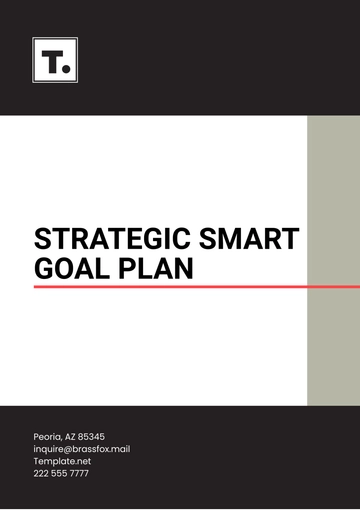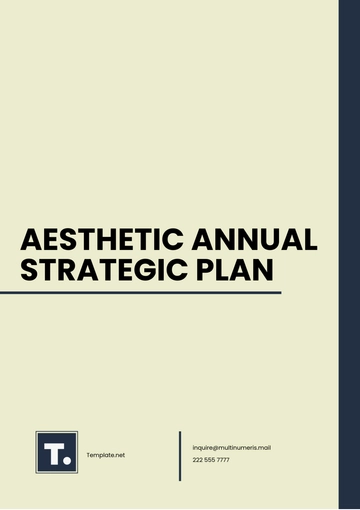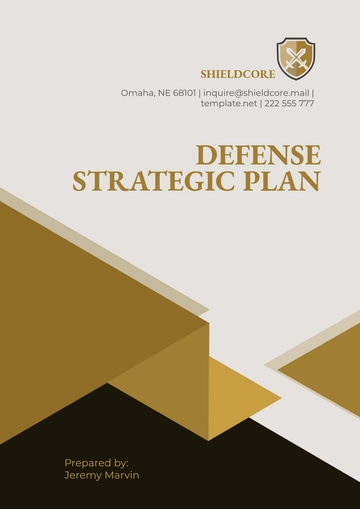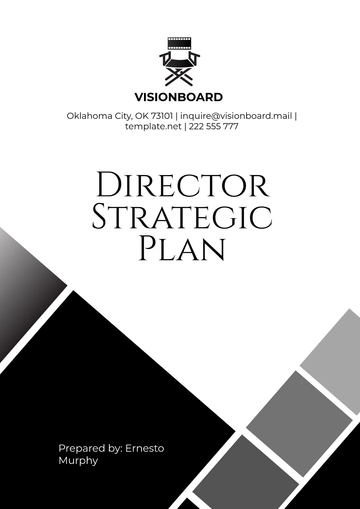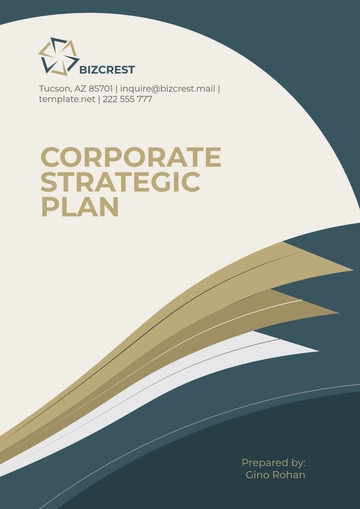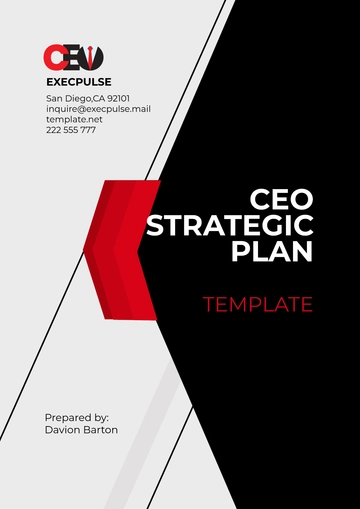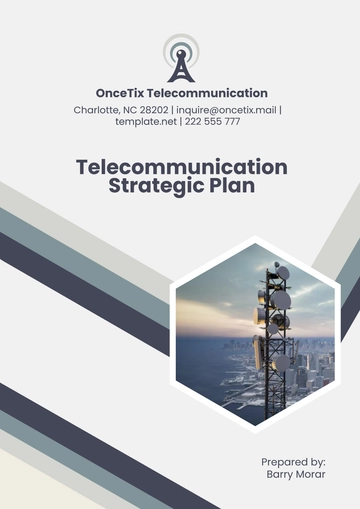Free Travel Agency Strategic Plan
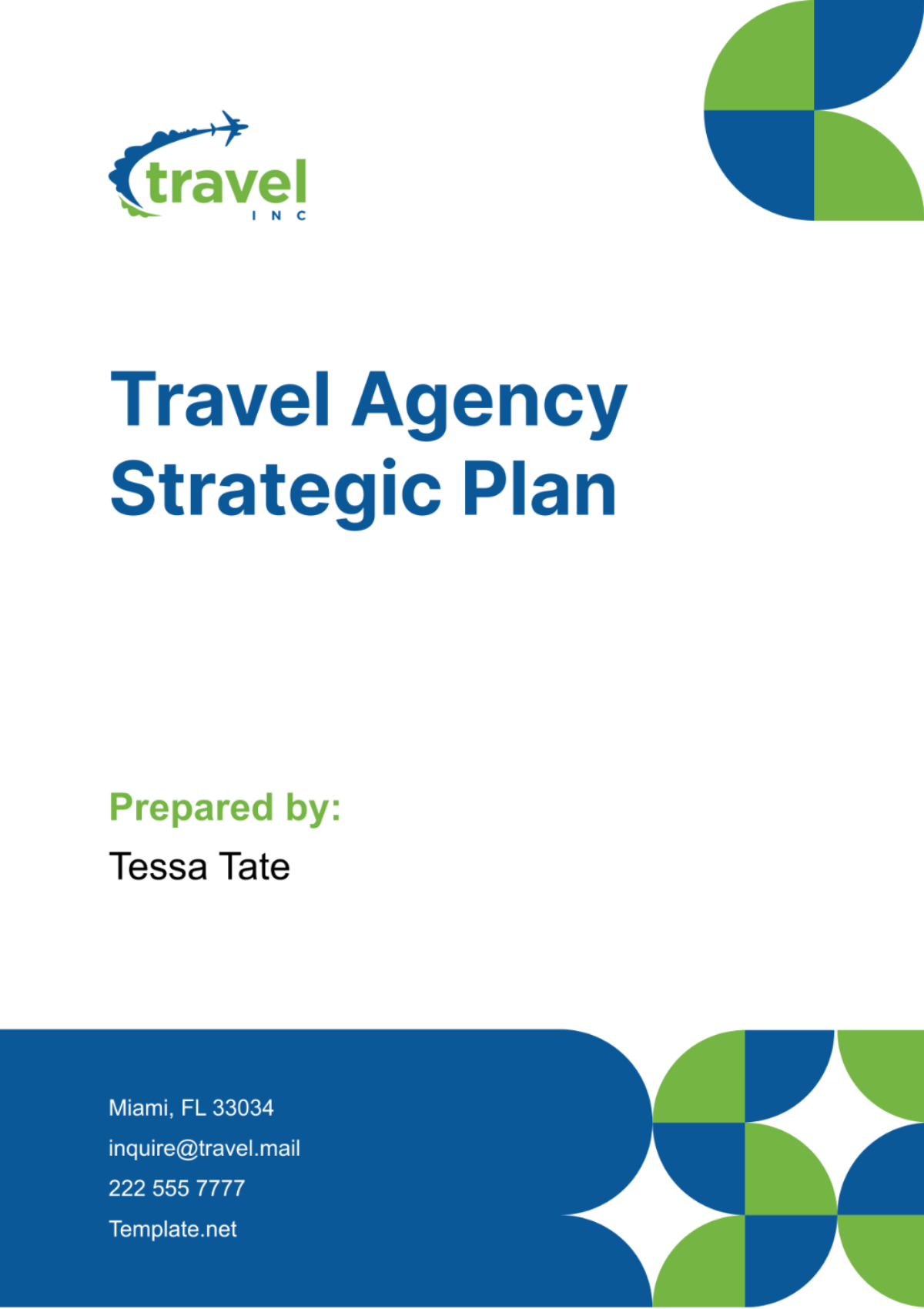
I. Executive Summary
A. Overview of the Travel Agency
Our travel agency, [Your Company Name], specializes in providing personalized and unforgettable travel experiences to clients worldwide. With a focus on exceptional customer service and a passion for exploration, we have established ourselves as a trusted partner for leisure and corporate travelers alike.
B. Summary of Strategic Goals and Objectives
The strategic plan outlines our vision for growth and success over the next five years. Key objectives include expanding our market reach, enhancing our digital presence, diversifying our product offerings, and optimizing operational efficiency to drive profitability.
C. Key Highlights and Priorities
Highlights of the plan include a renewed focus on customer-centricity, investment in technology and talent, strategic partnerships with suppliers and travel providers, and a commitment to sustainability and corporate social responsibility.
II. Introduction
A. Mission and Vision Statement
Our mission is to inspire and enable travel experiences that enrich lives and create lasting memories. Our vision is to be the leading provider of transformative travel experiences, recognized for our innovation, expertise, and commitment to excellence.
B. Importance of Strategic Planning in the Travel Industry
In a dynamic and competitive market, strategic planning is essential for guiding our business forward, anticipating and responding to market trends, and maximizing opportunities for growth and success.
C. Overview of the Strategic Planning Process
The strategic planning process involved extensive research, stakeholder consultations, and analysis of internal and external factors to develop a roadmap for achieving our long-term objectives.
III. Market Analysis
A. Industry Overview
The travel industry is experiencing rapid growth, fueled by increasing disposable incomes, evolving consumer preferences, and advancements in technology. However, the landscape is also characterized by intense competition, changing regulatory environments, and disruptive forces such as the impact of pandemics.
B. Market Trends and Dynamics
Key trends shaping the industry include the rise of experiential travel, the growing demand for sustainable and responsible tourism, the shift towards online booking platforms, and the emergence of new travel destinations and experiences.
C. Competitor Analysis
Competitors range from traditional travel agencies to online travel agencies (OTAs), tour operators, and niche travel providers. Understanding their strengths, weaknesses, and market positioning will inform our strategies for differentiation and competitive advantage.
D. Customer Segmentation and Target Markets
Our target markets include leisure travelers seeking authentic and immersive experiences, corporate clients requiring efficient and cost-effective travel solutions, and niche segments such as adventure travelers, luxury seekers, and eco-conscious travelers.
E. SWOT Analysis
Strengths: Strong brand reputation, personalized service offerings, experienced and knowledgeable staff.
Weaknesses: Limited digital presence, reliance on traditional marketing channels, vulnerability to external shocks.
Opportunities: Growing demand for experiential and sustainable travel, expansion into emerging markets, strategic partnerships with industry stakeholders.
Threats: Intense competition, economic uncertainty, geopolitical instability, regulatory challenges.
IV. Goals and Objectives
A. Long-Term Goals
[Your Company Name] aims to establish itself as a premier provider of bespoke travel experiences, expanding its reach globally while maintaining a commitment to personalized service and sustainable practices. Through strategic partnerships, innovative offerings, and a customer-centric approach, we seek to cultivate lasting relationships with clients and become their trusted advisor in all their travel endeavors.
B. Short-Term Objectives
In the next 12-24 months, [Your Company Name] will focus on immediate priorities such as optimizing our online presence, launching targeted marketing campaigns to attract new clients, and enhancing our product portfolio to cater to emerging travel trends. Additionally, we will invest in staff training and development to ensure our team is equipped with the skills and knowledge necessary to deliver exceptional service and exceed customer expectations.
C. Key Performance Indicators (KPIs) for Measurement
Key metrics for tracking our progress towards our goals include revenue growth rate, customer acquisition and retention rates, website traffic and conversion rates, customer satisfaction scores, and return on investment (ROI) for marketing initiatives. These KPIs will provide valuable insights into the effectiveness of our strategies and guide adjustments to optimize performance and achieve our objectives.
V. Marketing and Sales Strategies
A. Brand Positioning and Differentiation
[Your Company Name] will position itself as a trailblazer in the travel industry, offering unique and immersive experiences that go beyond conventional tourism. By highlighting our commitment to sustainability, cultural authenticity, and personalized service, we will differentiate ourselves from competitors and resonate with discerning travelers seeking meaningful adventures.
B. Marketing Channels and Tactics
Our marketing strategy will leverage a multi-channel approach to reach our target audience effectively. We will harness the power of social media platforms to engage with customers, share inspiring content, and cultivate a community of travel enthusiasts. Additionally, email marketing campaigns, content partnerships, and targeted advertising will be deployed to maximize brand visibility and drive conversions.
C. Sales Targets and Strategies
[Your Company Name] will set ambitious sales targets for each market segment and product category, backed by a robust sales strategy focused on proactive lead generation, relationship-building, and conversion optimization. Through personalized consultations, transparent pricing, and seamless booking experiences, we will create value for customers and incentivize repeat business, driving sustainable revenue growth.
D. Customer Relationship Management (CRM) Approach
Our CRM approach will revolve around creating personalized experiences for each customer, from the initial inquiry to post-trip follow-up. By leveraging data analytics and customer insights, we will tailor our communications and offerings to match individual preferences and anticipate their needs. Our goal is to build long-term relationships based on trust, loyalty, and satisfaction, turning first-time clients into brand advocates and repeat customers.
VI. Product and Service Offerings
A. Overview of Current Offerings
[Your Company Name] currently offers a wide range of travel services including customized vacation packages, group tours, corporate travel management, and specialty trips such as adventure travel and luxury getaways. Each offering is carefully curated to meet the diverse needs and preferences of our clientele, with an emphasis on quality, authenticity, and exceptional value.
B. Expansion or Diversification Plans
In response to evolving market trends and customer demands, we plan to expand our product portfolio to include new destinations, experiences, and service enhancements. This may involve partnering with local suppliers and tour operators to offer exclusive experiences, as well as developing niche offerings targeting specific demographics or interests such as wellness retreats, culinary tours, and eco-friendly travel options.
C. Specialized Services or Niche Markets
[Your Company Name] recognizes the importance of catering to niche markets and specialized interests within the travel industry. In addition to our core offerings, we will explore opportunities to serve niche segments such as solo travelers, LGBTQ+ travelers, families with young children, and seniors seeking accessible travel options. By understanding the unique needs and preferences of these groups, we can tailor our services to provide truly memorable and fulfilling experiences.
D. Pricing Strategy
Our pricing strategy will be designed to balance competitiveness with profitability, ensuring that our offerings remain attractive and accessible to our target market segments while maximizing revenue potential. This may involve dynamic pricing strategies based on demand fluctuations, seasonal pricing adjustments, and strategic bundling of services to create value-added packages. Additionally, we will continue to offer transparent pricing and flexible payment options to accommodate varying budget preferences and financial circumstances.
VII. Operational Plan
A. Organizational Structure
[Your Company Name] will maintain a streamlined organizational structure that fosters agility, collaboration, and innovation. Departments will be organized to optimize efficiency and communication, with clear roles and responsibilities defined to ensure accountability and effective decision-making. Regular performance reviews and feedback mechanisms will be implemented to support employee growth and development.
B. Staffing Requirements and Training
We recognize that our team is our greatest asset, and as such, we are committed to attracting, retaining, and developing top talent in the industry. Comprehensive training programs will be provided to equip staff with the knowledge and skills needed to deliver exceptional service and exceed customer expectations. In addition, ongoing professional development opportunities will be offered to support career advancement and employee satisfaction.
C. Technology Infrastructure
Investment in technology will be a priority for [Your Company Name] to enhance operational efficiency, improve customer experiences, and drive business growth. This includes upgrading our booking systems, implementing customer relationship management (CRM) software, and leveraging data analytics to gain insights into customer behavior and preferences. Embracing digital innovation will enable us to stay ahead of the curve and remain competitive in an increasingly digital landscape.
D. Supplier and Partner Relationships
Strong relationships with suppliers and travel partners are essential for ensuring the success of our business. [Your Company Name] will prioritize collaboration and communication with our network of suppliers, negotiating favorable terms and agreements to secure competitive pricing and exclusive offerings for our clients. By fostering mutually beneficial partnerships, we can enhance the value proposition for our customers and differentiate ourselves in the market.
E. Quality Assurance and Customer Service Standards
Maintaining high standards of quality and service excellence is paramount for building trust and loyalty with our customers. [Your Company Name] will implement rigorous quality assurance processes and performance metrics to monitor and evaluate the delivery of our services. Feedback mechanisms, customer surveys, and post-trip evaluations will be utilized to gather insights and identify areas for improvement, ensuring that we continuously meet and exceed customer expectations.
VIII. Financial Plan
A. Revenue Projections
[Your Company Name] anticipates steady revenue growth over the next five years, driven by strategic expansion initiatives and increased market penetration. Detailed revenue projections have been developed based on historical performance, market analysis, and growth projections for key market segments and product categories.
B. Cost Analysis and Budget Allocation
A thorough cost analysis has been conducted to identify and optimize expenditure across various operational areas. Budget allocations have been strategically allocated to prioritize investments in technology, marketing, talent acquisition, and product development while maintaining a focus on cost control and efficiency.
C. Profitability Targets
[Your Company Name] aims to achieve sustainable profitability by maximizing revenue opportunities, controlling costs, and optimizing operational efficiency. Profitability targets have been set based on industry benchmarks and internal performance metrics, with regular monitoring and adjustments to ensure alignment with strategic objectives.
D. Financial Risk Management Strategies
To mitigate financial risks and uncertainties, [Your Company Name] has implemented robust risk management strategies, including diversification of revenue streams, maintaining adequate cash reserves, and hedging against currency fluctuations and economic downturns. Contingency plans have been developed to address potential disruptions and ensure business continuity in adverse scenarios.
IX. Risk Management
A. Identification of Key Risks
[Your Company Name] has identified several key risks that could impact its operations and financial performance, including economic downturns, geopolitical instability, natural disasters, regulatory changes, and cyber threats. A comprehensive risk assessment has been conducted to prioritize and address these risks effectively.
B. Mitigation Strategies
Proactive measures have been implemented to mitigate identified risks, including diversification of revenue streams, insurance coverage, contingency planning, and compliance with regulatory requirements. Cross-functional teams are tasked with monitoring and addressing specific risk areas, with regular reviews and updates to risk management protocols.
C. Contingency Plans
[Your Company Name] has developed detailed contingency plans to respond to potential disruptions and minimize their impact on business operations. These plans outline specific actions to be taken in various scenarios, including alternative revenue streams, cost-saving measures, and communication strategies to mitigate reputational damage and maintain customer confidence.
X. Sustainability and CSR
A. Environmental and Social Responsibility Initiatives
[Your Company Name] is committed to minimizing its environmental footprint and promoting sustainable tourism practices. Initiatives include reducing carbon emissions through energy-efficient operations, supporting local communities through responsible tourism initiatives, and minimizing waste through recycling and conservation efforts.
B. Sustainable Business Practices
In addition to environmental initiatives, [Your Company Name] prioritizes ethical business practices and corporate social responsibility. This includes fair treatment of employees, ethical sourcing of products and services, and transparency in business operations. By upholding high ethical standards, [Your Company Name] aims to build trust and credibility with customers and stakeholders.
C. Community Engagement and Philanthropy
[Your Company Name] actively engages with local communities and supports charitable causes through philanthropic initiatives. This includes volunteering, fundraising, and partnerships with non-profit organizations that align with our values and mission. By giving back to the communities we serve, [Your Company Name] strives to make a positive impact beyond the realm of travel.
XI. Monitoring and Evaluation
A. Performance Monitoring Processes
[Your Company Name] has implemented robust performance monitoring processes to track progress towards strategic goals and objectives. Key performance indicators (KPIs) are regularly monitored and analyzed to assess the effectiveness of our strategies and initiatives. Real-time dashboards and reporting mechanisms provide visibility into performance metrics, enabling timely decision-making and adjustments as needed.
B. Regular Review and Reporting Mechanisms
Quarterly and annual reviews are conducted to evaluate the success of our strategic initiatives and identify areas for improvement. Comprehensive reports are prepared to communicate performance results to stakeholders, including executives, board members, and employees. These reviews serve as opportunities to celebrate achievements, address challenges, and recalibrate strategies as necessary.
C. Process for Adaptation and Continuous Improvement
[Your Company Name] is committed to a culture of continuous improvement and adaptation. Feedback mechanisms are in place to gather insights from customers, employees, and partners, which are used to inform future strategies and initiatives. Lessons learned from successes and failures are documented and shared across the organization to drive organizational learning and innovation.
XII. Implementation Plan
A. Action Steps and Timeline
A detailed implementation plan has been developed to guide the execution of our strategic initiatives. Action steps are clearly defined, with assigned responsibilities and deadlines to ensure accountability and progress tracking. The timeline is structured to prioritize high-impact initiatives while ensuring a phased approach to implementation to manage resource constraints and mitigate risks.
B. Responsible Parties and Accountabilities
Cross-functional teams have been established to oversee the implementation of specific initiatives, with designated project managers responsible for coordinating activities and monitoring progress. Clear lines of communication and escalation procedures are in place to address issues and obstacles in a timely manner, ensuring alignment with strategic objectives.
C. Resource Allocation and Budgeting
Resources have been allocated in accordance with strategic priorities and implementation timelines. Budgets have been set for each initiative, with provisions for contingency planning and reallocation of resources as needed. Regular reviews of resource utilization and expenditure ensure that resources are effectively deployed to maximize return on investment and achieve desired outcomes.
XIII. Conclusion
A. Recap of Strategic Goals and Objectives
In conclusion, [Your Company Name] is poised for success as we embark on the implementation of our strategic plan. With a clear vision, well-defined goals, and actionable strategies in place, we are confident in our ability to achieve our long-term objectives and position ourselves as a leader in the travel industry.
B. Commitment to Execution and Success
We are committed to the execution of our strategic plan with diligence, dedication, and agility. Through collaboration, innovation, and a relentless focus on customer value, we will overcome challenges and capitalize on opportunities to drive sustainable growth and success for [Your Company Name].
C. Call to Action for Stakeholder Engagement
We invite all stakeholders, including employees, customers, partners, and investors, to join us on this exciting journey. Your support, feedback, and collaboration are invaluable as we work together to realize our vision and create unforgettable travel experiences for our clients around the globe.
- 100% Customizable, free editor
- Access 1 Million+ Templates, photo’s & graphics
- Download or share as a template
- Click and replace photos, graphics, text, backgrounds
- Resize, crop, AI write & more
- Access advanced editor
Discover the ultimate tool for crafting your Travel Agency Strategic Plan with Template.net's editable and customizable template. Powered by an AI Editor Tool, this comprehensive resource empowers you to tailor your plan to perfection. Unleash your creativity and strategic vision to drive growth and success in the travel industry with ease and precision.
